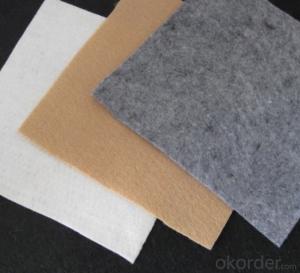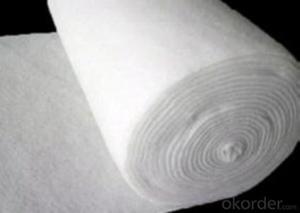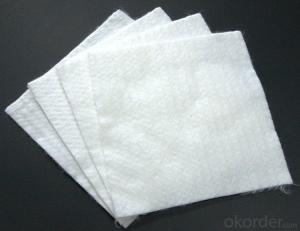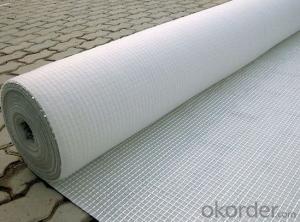Nahee Geotextile Non Woven Geotextile with Mat / Short Fiber / Needle Punched
- Loading Port:
- China main port
- Payment Terms:
- TT OR LC
- Min Order Qty:
- 3000 m²
- Supply Capability:
- 1000000 m²/month
OKorder Service Pledge
OKorder Financial Service
You Might Also Like
Specification
Specifications
1. Made of HDPE
2. Will not rust, rot, can be washed conveniently
3.Can bear weight up to 60 tons.
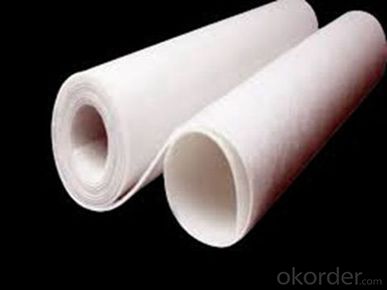

Packaging & Shipping
Packing: PLASTIC FILM INSIDE, AND WOVEN BAG OUTSIDE
Shipping: About 15 days after receipt the deposit
geotextile fabric
permeability,filtration,easy for construction
ISO and CE certificate
Good quality and competitive price
Our Service
Quality assurance
1.On a regular basis or as per your request,we entrust national testing agencies to conduct quality inspections
2. Strictly in accordance with the ISO9001-2008 international quality system standard,we monitor and manage the whole process throughout production,quality testing,and measurement to ensure product quality
3. For quality-related construction delay or substandard construction(except for damage or losses due to customer’s responsibility or irresistible natural disasters),we have refunding,replacement,and repair services.We will respond to customers’ feedbacks on quality issues within 24 hours.
After-sales service
1.In order to provide customers with comprehensive technical support,we will provide technical and other related information upon request in a timely manner.
2.In required,we will appoint specialized technicians to the construction site to give technical trainings to construction people,and offer technical guidance throughout the whole construction process.
3.For damage due to shipment and delivery,after we receive the complaint,we will check the issure through provided pictures and videos.If our responsibility is confirmed,we wil offer free replacement.
4.When the construction is completed,as your request,our technical staff may participate in the final acceptance.
FAQ:
Q: What kind of payments does jenor support?
A: T/T, L/C, Cash are accepted.
Q: Do you charge for the samples?
A: Accordeing to our company policy, the samples are free, we only charge the freight fee. And we will return the freight fee during the next order.
Q: Can you produce according to customers' design?
A: Sure, we are professional manufacturer, OEM and ODM are both welcome.
Q: Do you have other products?
A: Yes, please check the pictures:
- Q: What is the high strength to strengthen the composite geotextile
- Bujia Weaving Bugatite Rope
- Q: Are geotextiles resistant to mold and mildew?
- Yes, geotextiles are typically resistant to mold and mildew due to their synthetic materials and non-biodegradable nature.
- Q: How do geotextiles help with soil reinforcement in embankments?
- Geotextiles help with soil reinforcement in embankments by providing a stable and strong layer between the soil and the embankment structure. They act as a barrier, distributing the load evenly and preventing soil erosion and movement. Additionally, geotextiles enhance the overall stability and durability of the embankment by improving drainage and reducing the potential for soil settlement.
- Q: What are the specifications for geotextiles in athletic field construction?
- The specifications for geotextiles in athletic field construction typically include factors such as strength, permeability, and durability. Geotextiles used in this context are usually required to have high tensile strength to withstand the stresses placed upon them during installation and use. They should also have appropriate permeability to allow for proper drainage and prevent waterlogging. Additionally, geotextiles for athletic field construction should be durable and resistant to UV degradation, chemicals, and physical damage. These specifications ensure that the geotextile effectively reinforces the field, provides adequate drainage, and maintains its integrity over time.
- Q: How do geotextiles affect noise pollution?
- Geotextiles can help reduce noise pollution by acting as a sound barrier. When used in construction projects such as roads or buildings, they can absorb and dampen sound waves, preventing them from propagating and reducing the overall noise levels in the surrounding area.
- Q: What glue can clay stickers glue?
- Geotextiles generally do not need to glue glue, because the geotextile is made of polyester staple fiber acupuncture, the product itself has a lot of small pores, the use of glue bonding not only a waste of glue, bonding effect is not good. Geotextile in the project is generally used in the hand-type sewing machine suture, suture geotextile not only glue glue than the geotextile solid and reliable, and the construction of geotextile suture is also much higher than the construction of glue with geotextile Speed, while the cost of sewing geotextile is also much lower than the cost of glue bonding geotextile. Generally in the project to play the effect of impervious geomembrane, composite geomembrane (also known as composite geotextile) can use glue bonding. Adhesive glue can be purchased in the geomembrane manufacturer, of course, you can also buy in the local building materials market, waterproof plastic or KS geomembrane special glue. These two glue can also be used to bond geotextiles.
- Q: How do geotextiles improve the performance of shorelines?
- Geotextiles improve the performance of shorelines by providing erosion control, stabilizing the soil, and enhancing drainage. They act as a barrier that prevents soil erosion and helps to retain sediment, reducing the impact of waves and currents on the shoreline. Geotextiles also improve the stability of the soil by distributing the load and reducing the effects of settlement. Additionally, they enhance drainage by allowing water to pass through, preventing the buildup of hydrostatic pressure that can further damage the shoreline.
- Q: Where the detection of geotextiles more authoritative
- To the authority must find the authority of the body, the international authority was undoubtedly SGS, geotextile common test such as area weight, tear strength, puncture strength.
- Q: How are geotextiles secured in place?
- Geotextiles are typically secured in place using various methods such as anchoring pins, stakes, or other mechanical devices that are driven into the ground. Additionally, they can also be secured using soil cover, rocks, or other heavy materials to prevent them from shifting or moving.
- Q: Can geotextiles be used in underground pipe installation?
- Yes, geotextiles can be used in underground pipe installation. Geotextiles are often used as a protective barrier between the pipe and surrounding soil to prevent soil intrusion, enhance drainage, and provide additional support.
Send your message to us
Nahee Geotextile Non Woven Geotextile with Mat / Short Fiber / Needle Punched
- Loading Port:
- China main port
- Payment Terms:
- TT OR LC
- Min Order Qty:
- 3000 m²
- Supply Capability:
- 1000000 m²/month
OKorder Service Pledge
OKorder Financial Service
Similar products
Hot products
Hot Searches
Related keywords


















